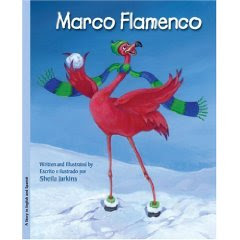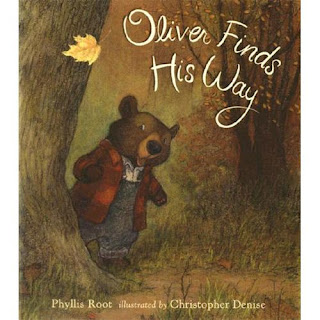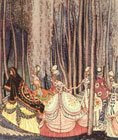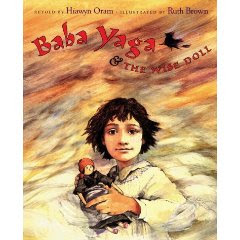
I disagree with the great Betsy Bird. Having finally gotten my hands on this book (I think it was in somebody's "catalog when I feel like it because it's going to be a pain" pile - I sure had piles like that as a cataloguer!) I find it is not as wonderful as expected. Funny underwear? Check. Lovely swashy watercolors and cartoony characters? Check. Marvelous expression of self-esteem and sticking to what you know is right....Ummm.
Well, they ARE underpants. Maybe a rabbit can get away with wearing them on his head, but I don't see any kids doing that. Actually, one could say it's an example of mass ignorance and peer pressure gone wrong as all the animals insist in supporting the rabbit in his error. Ok, Ok, I'm probably being a little anal (former cataloger here, remember?) but it irritates me when characters who like things to be "right", organized, orderly, etc. are cast as the villains. Organization and style? Uhh. Ok, maybe it's just me, but I read it several times before I got the whole narrator thing.
And when the donkey first appeared, I thought two people were talking, "What are you doing? Why are you wearing underpants on your head? [space] It's not a hat. They're underpants." And really, who says "underpants"? But it is a funny book, maybe I just read it too early in the morning to get it....and I'm probably prejudiced by the whole "support the rabbit in his error and come out looking wonderful" thing. I think we need more books where perfectionists don't realize the errors of their ways and suddenly become all free and arty but where the free arty types realize they can't find anything and the perfectionists were RIGHT ALL ALONG
and
Well, they ARE underpants. Maybe a rabbit can get away with wearing them on his head, but I don't see any kids doing that. Actually, one could say it's an example of mass ignorance and peer pressure gone wrong as all the animals insist in supporting the rabbit in his error. Ok, Ok, I'm probably being a little anal (former cataloger here, remember?) but it irritates me when characters who like things to be "right", organized, orderly, etc. are cast as the villains. Organization and style? Uhh. Ok, maybe it's just me, but I read it several times before I got the whole narrator thing.
And when the donkey first appeared, I thought two people were talking, "What are you doing? Why are you wearing underpants on your head? [space] It's not a hat. They're underpants." And really, who says "underpants"? But it is a funny book, maybe I just read it too early in the morning to get it....and I'm probably prejudiced by the whole "support the rabbit in his error and come out looking wonderful" thing. I think we need more books where perfectionists don't realize the errors of their ways and suddenly become all free and arty but where the free arty types realize they can't find anything and the perfectionists were RIGHT ALL ALONG
and
Definitely need more sleep.
Verdict: Buy it if you need more underwear books. And who doesn't?
ISBN: 978-1933605661; Published March 2008 by Kane Miller; Borrowed from the library
Verdict: Buy it if you need more underwear books. And who doesn't?
ISBN: 978-1933605661; Published March 2008 by Kane Miller; Borrowed from the library















































